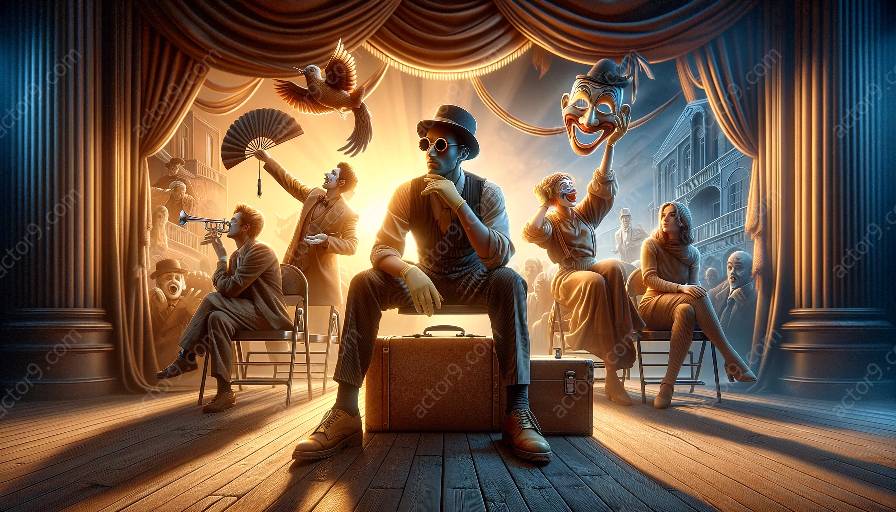Physical comedy is an art form that relies on the performer's actions and movements to create humor and entertainment without the need for spoken dialogue. One of the essential elements that are often used in physical comedy routines is the use of props. The incorporation of props in physical comedy not only adds visual appeal but also enhances the comedic effect, providing ample opportunities for creativity and laughter.
The Use of Props in Physical Comedy
The use of props in physical comedy is a versatile tool that allows performers to create unique and memorable moments. Props can be anything from everyday objects to specialized items that are creatively integrated into the performance. The use of props in physical comedy serves several purposes:
- Visual Impact: Props add visual interest and help create a vibrant and dynamic performance that captures the audience's attention.
- Enhanced Comedic Effect: Props can be used to exaggerate actions, create absurd situations, and enhance the comedic timing of the performance. The unexpected use of props can lead to comedic surprises that delight the audience.
- Creative Expression: Props provide performers with a platform for creative expression. They can manipulate and interact with props in imaginative ways, showcasing their physical dexterity and comedic prowess.
Mime and Physical Comedy
Mime is a form of performance art that often overlaps with physical comedy. Mime relies on the use of gestures, body movements, and facial expressions to convey a story or create a comedic narrative, often without the use of props. However, when props are incorporated into mime performances, they serve as extensions of the performer's body, providing additional opportunities for visual storytelling and comedic expression. The careful and deliberate use of props in mime and physical comedy can elevate the performance, engaging audiences with both humor and creativity.
The Art of Prop-Based Education and Outreach in Physical Comedy
Prop-based education and outreach in physical comedy can be a valuable platform for teaching and inspiring aspiring performers. By exploring the intricate relationship between props and physical comedy, educators and outreach programs can impart valuable lessons and skills to students, fostering creativity, teamwork, and the development of a unique comedic style.
Through hands-on workshops and instructional sessions, individuals can discover the art of using props effectively in physical comedy, honing their abilities to entertain and engage audiences through physical humor. These educational initiatives can also serve as opportunities for community outreach, bringing the art of physical comedy to a wider audience and promoting the joy of laughter and performance.
In Conclusion
Prop-based education and outreach in physical comedy offer an enriching and entertaining approach to exploring the use of props in performance art. By understanding the significance of props in physical comedy and their role in enhancing comedic expression, performers and enthusiasts can embark on a journey of creativity and laughter, enriching both their own experiences and those of their audiences.


























